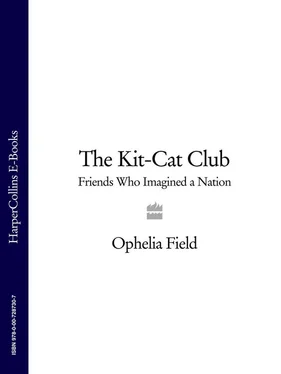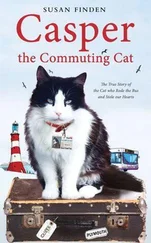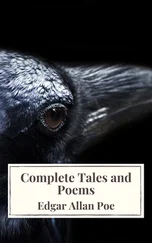The Whigs feared Anne might desert the Grand Alliance and shy away from war with France, perhaps even making a deal with her exiled half-brother, The Pretender, to undo the Act of Settlement. These fears were unfounded. Marlborough and Godolphin shared the Whigs' conviction about the need to contain French imperialism, and when, in February 1702, Louis' troops seized Dutch fortresses in the Spanish Netherlands, Anne reassured Europe she would not break the Alliance. On 4 May 1702, England formally declared war on France.
As the War of Spanish Succession began, Steele, who had spent the spring travelling through Essex and Norfolk hiring his company of soldiers with money borrowed from friends, found his whole regiment quartered at the dilapidated Landguard Fort in Harwich. It was a bleak, windy spot where Steele's men fell sick from chills, a place far removed from Steele's recent success in the London theatres and with little opportunity for either heroism or promotion. Steele at least had time to write. Local tradition has it he wrote his second play, The Lying Lover , on his off-duty evenings at the Queen's Arms in Harwich.
Addison meanwhile continued his European travels within Allied territory during the first campaign of the war. He visited Stepney's embassy in Vienna in the summer of 1702, then Hamburg that winter, complaining of being unable to see the German landscape because everything was so covered in snow that the dirty linen on inn beds was the only thing not white. As Addison was travelling on a tight budget, it was all the more welcome when Stepney opened doors for him with letters of introduction to the Electoral Courts of Dresden and Hanover, and by obtaining dinner and opera invitations from the Prince of Liechtenstein and the nobility in Hamburg. Addison likely sent Stepney an early draft of his Italian travel journal, later to be dedicated to Somers, which Addison said was passed around so many friends in manuscript that it ‘made a greater voyage than that which it describes’. 11 More than any of his literary tourism in Italy, these months among the northern European Courts, under Stepney's tutelage, would prove useful to Addison in future.
Somers told Halifax he now saw their role as fighting at home the war that Marlborough was to fight on the Continent. By this he meant that it was their responsibility to run the Whig publicity machine in support of Britannia's crusade in Europe—selling a woolly conflation of liberty and national destiny not dissimilar to American patriotism in later centuries. Somers edited and Tonson published Several Orations of Demosthenes…(English'd from the Greek by several Hands) (1702), for example, which included speeches calling the Athenians to war. Four of seven contributors to this book were Kit-Cats. 12
When it came to whipping up Whig Protestant patriotism, the Kit-Cats were hindered by the profiles of the monarchs fate handed to England: first William, a Calvinist Dutchman, then Anne, an un-attractive Tory woman, and finally the prospect of a Lutheran German from Hanover. Marlborough was therefore quickly chosen to become ‘the hero of the Whigs, though he was never a Whig hero’. 13 This was made possible largely thanks to Marlborough's wife Sarah, who was a vehement Whig and spent much of the following decade pressing her husband to side with, or at least work with, the Whig leadership. Like Sarah, the Kit-Cat Club was eager to absorb the Allied Commander into its party, and from 1702 onwards recruited a series of Marlborough relations and supporters as the next best thing to the man himself, who protected his political independence. A Tory satire, written after Marlborough received his dukedom, described a typical Kit-Cat member as being a ‘humble servant’ of Marlborough ‘from the Teeth outwards’, but ‘the Duke will not be led by the Nose by him, which very much alters his [the Kit-Cat's] inward Respect’ for the Duke. 14
The clearest example of this forcible assimilation of the Marlborough ‘brand’ is the admission of Francis, Viscount Rialton and future 2nd Earl of Godolphin, who was both son and heir of the Lord Treasurer Sidney Godolphin and husband of Marlborough's eldest daughter Henrietta. In a Kit-Cat toast to Henrietta, she is complimented in terms clearly referencing her father: ‘Her conquering race with Various fate surprise / Who 'scape their Arms are Captive to their Eyes.’
Marlborough's other daughters were also repeatedly nominated as Kit-Cat toasts after 1702. Similarly, the Kit-Cat Club membership of Edmund Dunch can be explained by his marriage in spring 1702 to Elizabeth Godfrey, daughter of Marlborough's sister Arabella. Two other Kit-Cats later married a daughter and a granddaughter of the Marlboroughs. Dr Garth's importance within the Club rose significantly after he became Marlborough's personal physician, and after Garth helped Marlborough's younger brother avoid murder charges, earning Marlborough's lasting gratitude.
Another Kit-Cat member who was admitted thanks to his links to Marlborough was Charles, Lord Mohun. By 1702, Mohun had stood trial for murder no less than three times, escaping conviction in at least one case thanks to the value of his vote in the Lords, which he gave to King William in exchange for clemency. Following his return from a trip to Hanover to meet with Electress Sophia, Mohun was teased for putting on ‘a Politician's Face’ for the Whigs. 15 Kit-Cat membership sometime between the autumn of 1701 and May 1702 therefore fitted neatly with Mohun's resolution to rectify his ‘slips of youth’ and become a political player. 16 It would also have fitted, cynically, with his need for more friends in the Lords in order to win a complicated inheritance dispute that began in 1701. At his first attendance at the Kit-Cat Club, Mohun ‘broke down the gilded emblem on the top of his chair’, giving Tonson the opportunity to allude slyly to Mohun's wayward past by complaining that ‘a man who would do that would cut a man's throat’. 17
A number of military men were also admitted to the Kit-Cat after 1702, all of whom, almost inevitably given the limited size of the army's officer class, had links with Marlborough. 18 Most important of these was James, 1st Earl of Stanhope, eldest son of the respected diplomat Alexander Stanhope. By May 1698, when James Stanhope served briefly alongside Prior at the Paris embassy, a friend told Alexander that his son was the ‘greatest hope in England, and I believe no man of his age hath by his own personal merit made himself so many friends and rendered himself so universally acceptable’. 19
King William had at first been charmed by Stanhope's precocity and outspokenness, but cooled towards him when the young man wrote in favour of disbanding the army after Ryswick and argued with one of the King's Dutch friends. This anti-Court positioning alone excluded Stanhope from the Kit-Cat Club when it was first formed in the late 1690s. Stanhope also lost royal favour at the outbreak of the culture wars in 1698 because of his overt anticlericalism. When Anne came to the throne, however, Stanhope was one of those lucky enough to survive the Whig purge thanks to Somerset's protection. Somerset supported Stanhope in gaining a parliamentary seat for Cockermouth in Cumberland, and probably a simultaneous seat at the Kit-Cat Club, in summer 1702. Stanhope's erudition, particularly as a translator of Greek, and his exquisite family seat of Chevening in Kent, qualified him for the Club from a cultural standpoint, one contemporary calling him ‘the best scholar perhaps of any gentleman of his time’. 20
At the outbreak of the War of Spanish Succession, Stanhope had been posted to the Iberian Peninsula, but, after commendation for his part in storming Vigo Bay in October 1702—England's first significant victory—he had been transferred in 1703 to serve directly under Marlborough in Flanders. Stanhope developed a good working partnership with Marlborough, who recognized that Stanhope possessed a mixture of soldierliness, diplomatic charm and intellect not unlike his own.
Читать дальше












